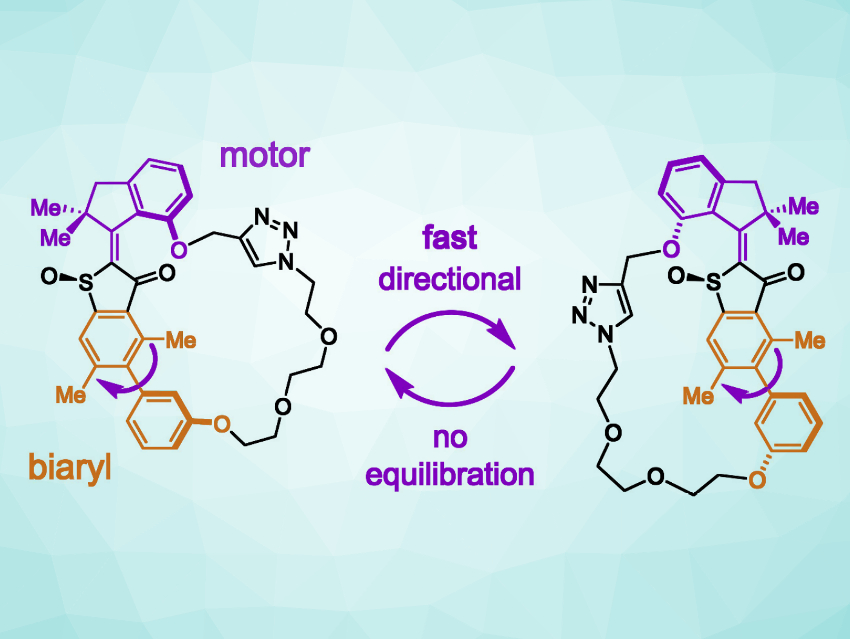Molecular motors are small organic molecules in which one molecular part can rotate relative to another upon external stimulation, e.g., with light. First attempts have been made to transmit these motions at the molecular scale or integrate them into larger structures to perform work. However, there is only limited knowledge about the actual amount of work that a single molecular motor can actively perform against external strain.
Henry Dube and colleagues, Ludwig Maximilians University, Munich, Germany, have developed a molecular motor setup (pictured) that introduces a barrier for the rotation against which the motor unit has to act. The team used an axially chiral biaryl receiver unit (pictured in orange), which in its free form undergoes a slow and nondirectional rotation to give a racemic mixture. This unit was coupled to a molecular motor (pictured in purple) that can drive this rotation in one direction and, thus, disturb the equilibrium. The motor is based on an hemithioindigo (HTI) dye and can switch between the E and Z configuration of its central double bond when it is heated or irradiated with light.
The biaryl rotation is an energetic hurdle which the motor has to overcome. Due to its chiral nature, the rotation of the biaryl group can be observed experimentally. In this way, the amount of transmitted energy can be determined precisely. This could help to understand how much power molecular motors can generate and how much of that power can be harvested to drive separate molecular entities.
- Active and Unidirectional Acceleration of Biaryl Rotation by a Molecular Motor,
Edgar Uhl, Peter Mayer, Henry Dube,
Angew. Chem. Int. Ed. 2020.
https://doi.org/10.1002/anie.201913798




